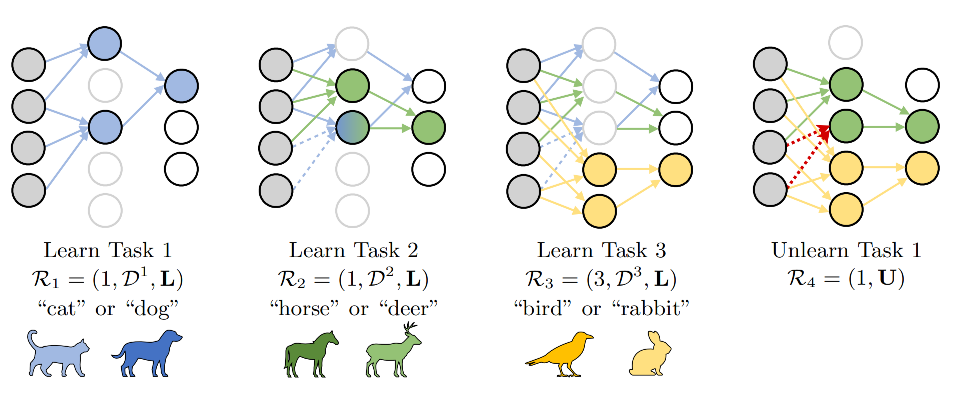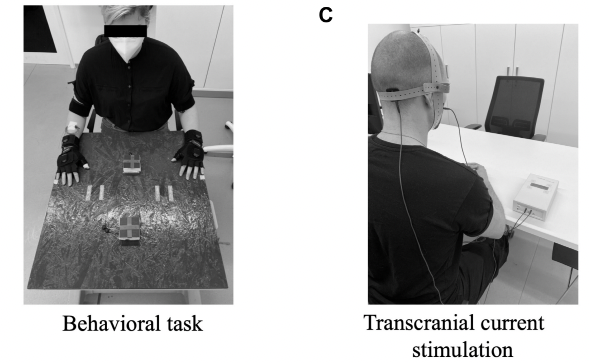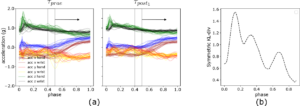Publication List with Images
2025 |
|
Dave, Vedant; Özdenizci, Ozan; Rückert, Elmar Learning Robust Representations for Visual Reinforcement Learning via Task-Relevant Mask Sampling Journal Article In: Transactions on Machine Learning Research, 2025. Links | BibTeX | Tags: machine learning, Reinforcement Learning, Representation Learning @article{dave2025learning, |  |
Oezdenizci, Ozan; Rueckert, Elmar; Legenstein, Robert Privacy-Aware Lifelong Learning Proceedings Article In: International Conference on Learning Representations (ICLR), 2025. Links | BibTeX | Tags: Deep Learning, machine learning @inproceedings{Oezdenizci2025, |  |
2022 |
|
Herzog, Rebecca; Berger, Till M; Pauly, Martje Gesine; Xue, Honghu; Rueckert, Elmar; Munchau, Alexander; B"aumer, Tobias; Weissbach, Anne Cerebellar transcranial current stimulation-an intraindividual comparison of different techniques Journal Article In: Frontiers in Neuroscience, 2022. Links | BibTeX | Tags: Human motion analysis, human motor control, machine learning, Medical Robotics @article{Herzog2022, |  |
2021 |
|
Xue, Honghu; Herzog, Rebecca; Berger, Till M.; Bäumer, Tobias; Weissbach, Anne; Rueckert, Elmar Using Probabilistic Movement Primitives in analyzing human motion differences under Transcranial Current Stimulation Journal Article In: Frontiers in Robotics and AI , vol. 8, 2021, ISSN: 2296-9144. Abstract | Links | BibTeX | Tags: Finger Tapping Motion, Human motion analysis, machine learning, Probabilistic Movement Primitives, Transcranial current stimulation @article{Rueckert2021,In medical tasks such as human motion analysis, computer-aided auxiliary systems have become preferred choice for human experts for its high efficiency. However, conventional approaches are typically based on user-defined features such as movement onset times, peak velocities, motion vectors or frequency domain analyses. Such approaches entail careful data post-processing or specific domain knowledge to achieve a meaningful feature extraction. Besides, they are prone to noise and the manual-defined features could hardly be re-used for other analyses. In this paper, we proposed probabilistic movement primitives(ProMPs), a widely-used approach in robot skill learning, to model human motions. The benefit of ProMPs is that the features are directly learned from the data and ProMPs can capture important features describing the trajectory shape, which can easily be extended to other tasks. Distinct from previous research, where classification tasks are mostly investigated, we applied ProMPs together with a variant of Kullback-Leibler (KL) divergence to quantify the effect of different transcranial current stimulation methods on human motions. We presented an initial result with10participants. The results validate ProMPs as a robust and effective feature extractor for human motions. |  |
Compact List without Images
Journal Articles |
Dave, Vedant; Özdenizci, Ozan; Rückert, Elmar Learning Robust Representations for Visual Reinforcement Learning via Task-Relevant Mask Sampling Journal Article In: Transactions on Machine Learning Research, 2025. @article{dave2025learning, |
Herzog, Rebecca; Berger, Till M; Pauly, Martje Gesine; Xue, Honghu; Rueckert, Elmar; Munchau, Alexander; B"aumer, Tobias; Weissbach, Anne Cerebellar transcranial current stimulation-an intraindividual comparison of different techniques Journal Article In: Frontiers in Neuroscience, 2022. @article{Herzog2022, |
Xue, Honghu; Herzog, Rebecca; Berger, Till M.; Bäumer, Tobias; Weissbach, Anne; Rueckert, Elmar Using Probabilistic Movement Primitives in analyzing human motion differences under Transcranial Current Stimulation Journal Article In: Frontiers in Robotics and AI , vol. 8, 2021, ISSN: 2296-9144. @article{Rueckert2021,In medical tasks such as human motion analysis, computer-aided auxiliary systems have become preferred choice for human experts for its high efficiency. However, conventional approaches are typically based on user-defined features such as movement onset times, peak velocities, motion vectors or frequency domain analyses. Such approaches entail careful data post-processing or specific domain knowledge to achieve a meaningful feature extraction. Besides, they are prone to noise and the manual-defined features could hardly be re-used for other analyses. In this paper, we proposed probabilistic movement primitives(ProMPs), a widely-used approach in robot skill learning, to model human motions. The benefit of ProMPs is that the features are directly learned from the data and ProMPs can capture important features describing the trajectory shape, which can easily be extended to other tasks. Distinct from previous research, where classification tasks are mostly investigated, we applied ProMPs together with a variant of Kullback-Leibler (KL) divergence to quantify the effect of different transcranial current stimulation methods on human motions. We presented an initial result with10participants. The results validate ProMPs as a robust and effective feature extractor for human motions. |
Proceedings Articles |
Oezdenizci, Ozan; Rueckert, Elmar; Legenstein, Robert Privacy-Aware Lifelong Learning Proceedings Article In: International Conference on Learning Representations (ICLR), 2025. @inproceedings{Oezdenizci2025, |

